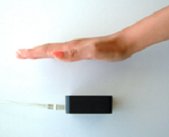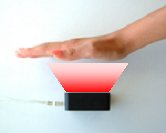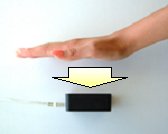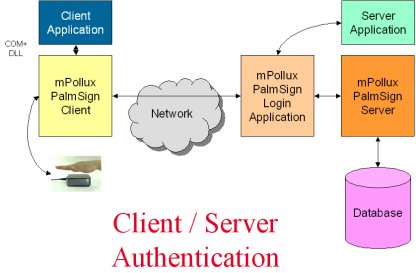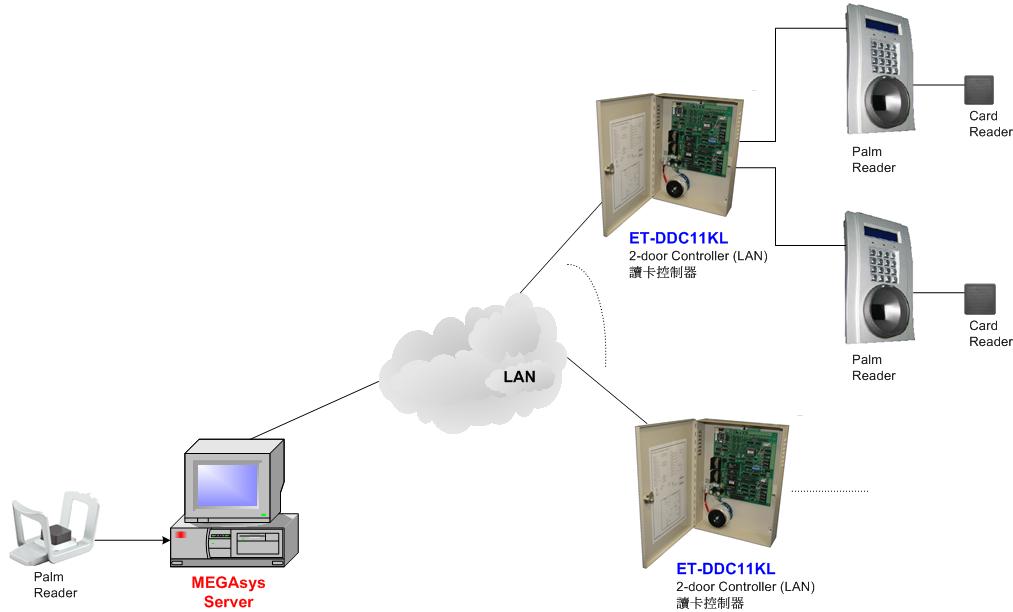MEGAsys - Palm Vein Technology
R&D
Fujitsu Palm Vein Technology
How secure are your assets? Can your personal identification number be easily guessed? As we increasingly rely on computers and other machines in our daily lives, ensuring the security of personal information and assets becomes more of a challenge. If your bank card or personal data falls into the wrong hands, others can profit at your expense. To help deal with this growing problem, Fujitsu has developed a unique biometric security technology that puts access in the palm of your hand and no one else's.
palm vein technology
Fujitsu's palm vein authentication technology consists of a small palm vein scanner that's easy and natural to use, fast and highly accurate. Simply hold your palm a few centimeters over the scanner and within a second it reads your unique vein pattern. A vein picture is taken and your pattern is registered. Now no one else can log in under your profile. ATM transactions are just one of the many applications of this new technology.
Fujitsu's technology capitalizes on the special features of the veins in the palm. Vein patterns are unique even among identical twins. Indeed each hand has a unique pattern. Try logging in with your left hand after registering with your right, and you'll be denied access. The scanner makes use of a special characteristic of the reduced hemoglobin coursing through the palm veins — it absorbs near-infrared light. This makes it possible to take a snapshot of what's beneath the outer skin, something very hard to read or steal.
Besides the high accuracy of a false rejection rate of 0.01% and a false acceptance rate of less than 0.00008 %(as of February, 2005), Fujitsu's contactless palm vein authentication offers a range of advantages over other biometric technologies.
ATM with PalmSecure™
"Fingerprint scans and face recognition ID methods are associated with the police by some people on a psychological level," says Shigeru Sasaki, director of Fujitsu's Media Solutions Laboratory. (Interview date: Feb 2nd, 2005) "In public areas, others don't like the thought of touching what everyone else has touched for sanitary reasons. This is why we created a contactless palm vein scanner."
The near-infrared rays in the palm vein scanner have no effect on the body when scanning. To protect the privacy and personal information of the user, the registered biometric information itself can be stored in bank cards. Bank of Tokyo-Mitsubishi ATMs in Japan are already equipped with palm vein scanners developed by Fujitsu. Users access their accounts by having a scan of their palm compared to a pre-registered scan stored on their bank card. This is expected to help reduce the growing cases of bank card thefts and fraudulent financial transactions.
Amid the heightened security climate in recent years and fears of terrorism, there has been a surge in demand for accurate biometric authentication methods. Meanwhile, recent bank card forgery cases in Japan have numbered in the hundreds, involving dozens of financial institutions and hundreds of millions of yen. Victims are usually unaware their money is being stolen until it's too late.
Bank card security isn't just the responsibility of the end user. Financial institutions around the world are being urged to take a greater role in preventing bank card fraud by improving card security. Japan's Financial Services Agency, for instance, has called on banks to implement added security measures such as introducing biometric identification systems.
Fujitsu's palm vein authentication technology will help stop this new wave of crime, and can also be adapted for use in access to secure areas as well as online transactions, customer identification and claiming baggage.
"You could also use it to get into your house, and to access your PC or terminal," says Akira Kuroki, general manager in Fujitsu's Ubiquitous Systems Group. (Interview date: Feb 2nd, 2005)
PalmSecure™
Fujitsu will continue to develop the promising new technology of contactless palm vein authentication by shrinking the scanner. A future goal Fujitsu is enthusiastically working toward is incorporating the scanner in mobile phones. This is expected to drastically change the way mobile phones are used. The security of handheld electronic devices will become increasingly important as they store more personal information. In all these applications, the key to securing your assets and data will be in the palm of your hand.


